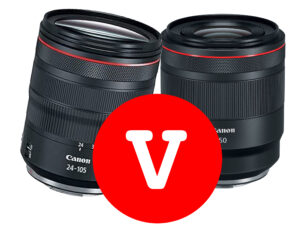As a passionate enthusiast of photography history, I’ve delved deep into the evolution of photographic technology over the years. It’s a journey filled with countless innovations and fascinating devices. I’m normally one to mention how influential Leica has been in camera development, but these are certainly some influential and impressive feats of engineering cameras that have shaped photography as we know it today. Yes they are some of the most unusual old-school cameras ever made but each deserves recognition for its unique place in camera history.
George Lawrence’s Mammoth Camera (1900)
George R. Lawrence, an American photographer known for his aerial photography, created the mammoth camera in 1900 to capture the Alton Limited luxury passenger train.

This colossal device, designed to hold an 8 feet by 4.5 feet photographic plate, weighed over 900 pounds and required 15 men to operate. Its success at the Paris Exposition of 1900 earned Lawrence widespread acclaim.

The image quality is undeniable. In 1906 Lawrence captured this aerial of San Francisco after a devastating earthquake. He hung the camera from a series of kites to get it there. Brave.

Ermanox and Ermanox Reflex (1924 / 1926)
Heinrich Ernemann’s Ermanox camera, introduced in 1924, revolutionized low-light photography with its fast 100mm Ernostar lens. The later Ermanox Reflex (1926) added a built-in reflex viewfinder, enhancing shot composition. These cameras, with their fast lenses and compact design, influenced the future of portable photography and eventually contributed to the development of the Zeiss Sonnar lenses.

Jaeger-LeCoultre Compass Camera (1937)
The Compass Camera, a marvel of miniaturization and multifunctionality, was introduced in 1937 by Jaeger-LeCoultre. This compact camera featured a 35mm f/3.5 Anastigmat lens, built-in rangefinder, collapsible viewfinder, exposure meter, and even a compass. Despite its limited commercial success, the Compass Camera is celebrated for pushing the boundaries of camera design.
Who is Jaeger-LeCoultre?
Jaeger-LeCoultre, founded in 1833 by Antoine LeCoultre in Le Sentier, Switzerland, is a prestigious Swiss luxury watch and clock manufacturer known for its innovation and craftsmanship. With over 1,200 different calibers to its name, JLC has created iconic pieces like the Reverso, introduced in 1931 with its unique reversible case, and the Atmos clock, powered by air pressure and temperature changes. The brand is also known for the Compass Camera, a remarkably compact and intricate camera introduced in 1937, showcasing JLC’s engineering prowess beyond horology. Renowned for producing complex and intricate timepieces, Jaeger-LeCoultre maintains high standards by manufacturing virtually all components in-house. Celebrated in both haute horlogerie and popular culture, JLC remains a symbol of luxury and technical excellence in watchmaking.

Jaeger-LeCoultre created the Compass Camera in 1937 to demonstrate their exceptional engineering and innovative capabilities beyond the realm of watchmaking. Designed by Englishman Noel Pemberton Billing, the camera was a marvel of miniaturization and precision engineering, reflecting the same meticulous craftsmanship and ingenuity that JLC applied to their timepieces. The Compass Camera was incredibly compact, yet featured advanced functionalities such as a built-in exposure meter, rangefinder, and even a collapsible lens, making it a versatile tool for photographers. This endeavor highlighted Jaeger-LeCoultre’s commitment to pushing the boundaries of what could be achieved with precision instruments, reinforcing their reputation as a leader in luxury and technical excellence.
Univex Mercury II (1945)
The Mercury II, launched in 1945 by the Universal Camera Corporation, featured a distinctive rotary shutter mechanism and used standard 35mm film. Known for its built-in exposure meter and high-quality lens, the Mercury II offered advanced features at an affordable price. However, competition from emerging Japanese manufacturers and technical issues with the rotary shutter limited its long-term success.

Hasselblad Super Wide Models (1954-2002)
Hasselblad’s Super Wide models, starting with the SWA in 1954, featured the groundbreaking Carl Zeiss Biogon 38mm f/4.5 lens. These cameras provided exceptional wide-angle performance with minimal distortion, making them favorites among architectural and landscape photographers. The SWC, introduced in 1959, further enhanced this legacy with improved lens coatings and a redesigned viewfinder.

Toyoca 35 (1955)
The Toyoca 35, released in 1955 by Tougodo, combined the versatility of 35mm film with the unique handling of twin lens reflex (TLR) cameras. Its horizontal dual-lens system and affordable price made it popular among amateur photographers. Despite its initial success, competition from more advanced cameras eventually overshadowed the Toyoca 35.

Zeiss Ikon Contarex I (1959)
The Zeiss Ikon Contarex I, known as the “Bullseye” for its prominent selenium light meter, was introduced in 1958. This flagship SLR camera featured interchangeable Zeiss lenses and precise exposure readings. Despite its high production costs and competition from cameras like the Nikon F, the Contarex I remains a prized collectible for its innovation and craftsmanship.

Contax AX (1996)
The Contax AX, launched in 1996 by Kyocera, featured a unique autofocus system that moved the film plane instead of the lens elements. This allowed the use of manual-focus Carl Zeiss lenses with autofocus convenience. Despite its innovative design, the Contax AX faced challenges from established autofocus systems and the rise of digital photography, leading to limited commercial success.
These remarkable cameras represent significant milestones in the history of photography, showcasing the ingenuity and creativity of their designers. Each one, with its unique features and technological advancements, has left a lasting impact on the evolution of photographic equipment.
Explore the fascinating history of photography with these eight innovative analog cameras, each a masterpiece of design and technology.






































































